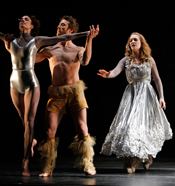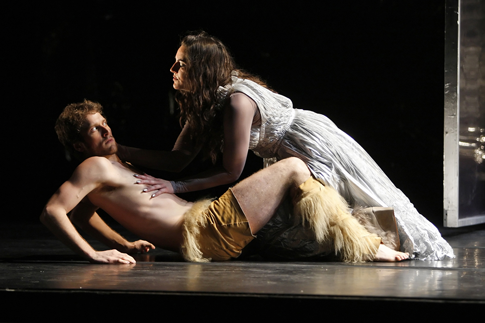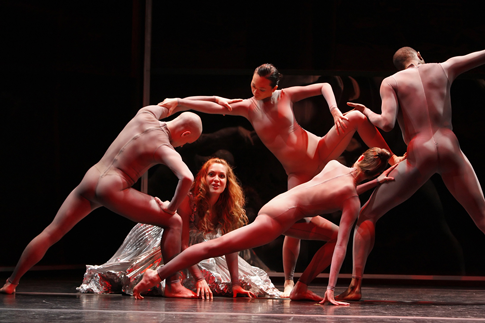15 May 2008
Gotham Chamber Opera: Ariadne Unhinged
The Gotham Chamber Opera has been delighting opera fans on the Lower East Side for seven years now, one small audience at a time.

The Gotham Chamber Opera has been delighting opera fans on the Lower East Side for seven years now, one small audience at a time.
Only 350 patrons can fit into the Henry Street Settlement Theater at 466 Grand Street, a circumstance which creates an intimacy between performers and audience that is unlike any experience you will have uptown. Brenda Patterson—the title character on the May 11 performance of the Chamber Opera’s most recent production Ariadne Unhinged—created electric moments in this little theatre.
Ariadne Unhinged is not an opera in the traditional sense of the word; rather, it is a collage of three pieces, only one of which was actually drawn from an opera. Claudio Monteverd’s Lamento d’Arianna (from the now-lost 1608 opera Arianna), Franz Josef Haydn’s cantata for solo voice Arianna a Naxos (1790), and Arnold Schoenberg’s melodrama Pierrot Lunaire (1912) were stitched together into a genre-busting performance by Neal Goren, Artistic Director of GCO, along with director and choreographer Karole Armitage of Armitage Gone! Dance.
 Frances Chiaverini, Ryan Kelly and Brenda Patterson (Ariadne)
Frances Chiaverini, Ryan Kelly and Brenda Patterson (Ariadne)
Ariadne Unhinged attempts to delve into the madness of grief that
the mythological Ariadne experiences upon being abandoned by her lover
Theseus right after she has saved his life and guaranteed him his crown. The
palindromic structure of the work nestled the three sections (of seven songs
each) of Pierrot Lunaire between sections of the Monteverdi and the
Haydn.
All the music was well performed and the juxtaposition of dancers and singer onstage, which can be so awkward if the singer doesn’t move well, was extraordinarily well executed. Vera Lutter’s set design, along with Clifton Taylor’s lighting allowed for a number of transformations of the stage without ever interfering with the action or the continuity of the work.
With sections Monteverdi serving as “bookends” and the middle piece of the performance, I was inclined to regard these moments of monody as Ariadne’s most lucid moments, while the Schoenberg represented her at her most mad and delusional. What struck me as detrimental to the endeavor was a series of less-than-subtle props carted onto the stage for each of the twenty-one Pierrot songs. The props—including huge cardboard roses, two-foot long knitting needles, a “grotesque” violin bow and a fake violin, and a cardboard moon on a stick, among others—appeared so predictably for each that I started wondering what the next prop might look like instead of listening to one of my favorite pieces of music.
 Emily Langford Johnson (Ariadne) and Ryan Kelly
Emily Langford Johnson (Ariadne) and Ryan Kelly
It seems to me that Schoenberg’s music and Albert Giraud’s poetry (as translated by Otto Erich Hartleben) is so vivid and full of meaning that the addition of wooden props is not only unnecessary, but even injurious to the artwork. In particular, when the dancers came on stage crouched under wrinkled aluminum sheets the effect was only the creation of a major distraction due to the sound of the sheets crinkling and crackling during the entire song. Other parts of the dance were much more effective and added greatly to the experience, notably, the lovely duets that were danced while Ms. Patterson sang the sections of Haydn’s cantata.
The GCO’s orchestra was another highlight of the evening—each composer’s music had a different accompaniment: theorbo for the Monteverdi, piano for the Haydn, and of course, Schoenberg’s Pierrot ensemble for Pierrot Lunaire. All the instrumental music was impeccable, but the Pierrot ensemble brought a particularly enjoyable energy to the performance.
 Brenda Patterson (Ariadne) and dancers
Brenda Patterson (Ariadne) and dancers
Goren’s little company is doing big things for opera, and I eagerly await its next production.
Megan Jenkins